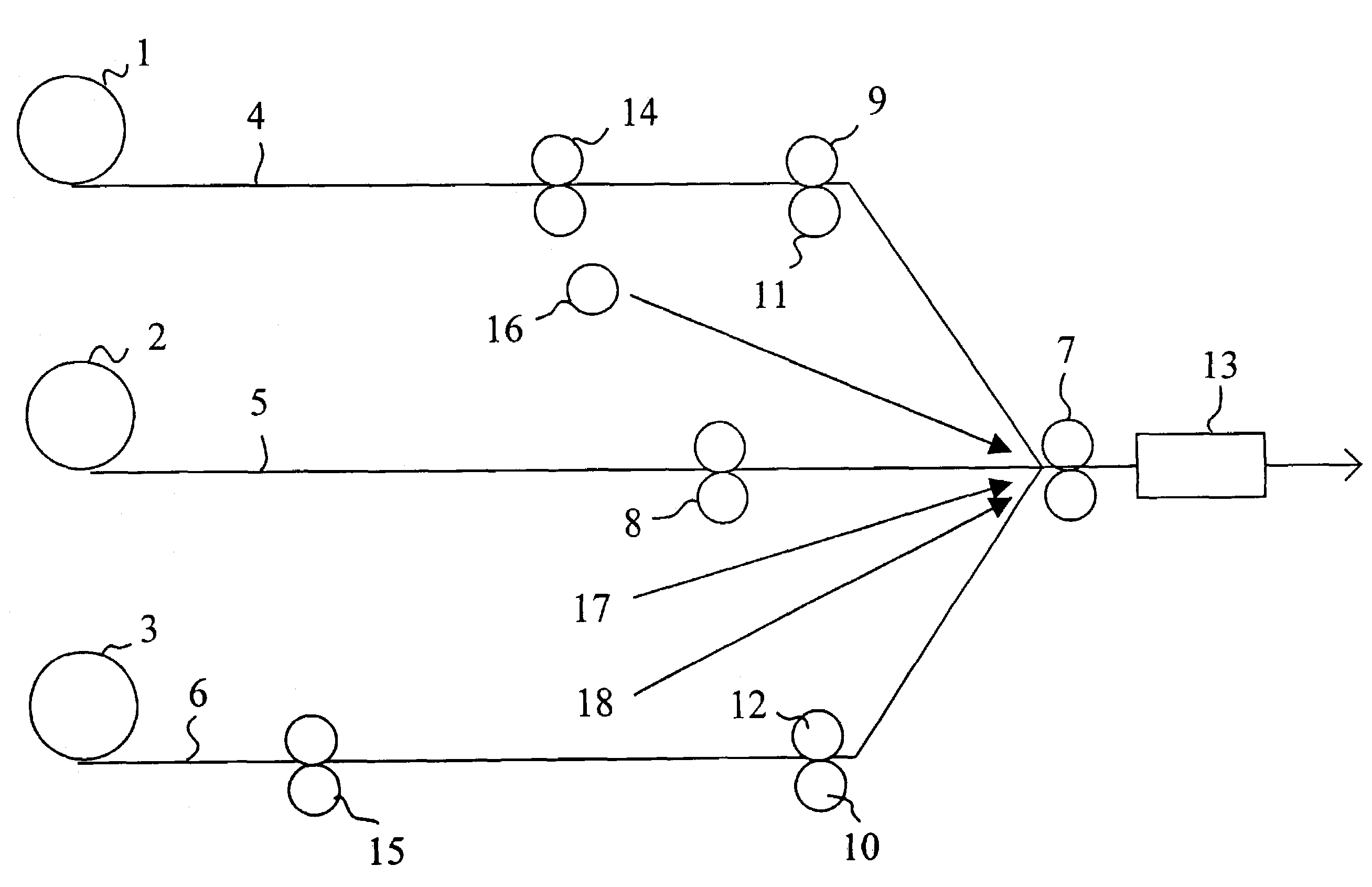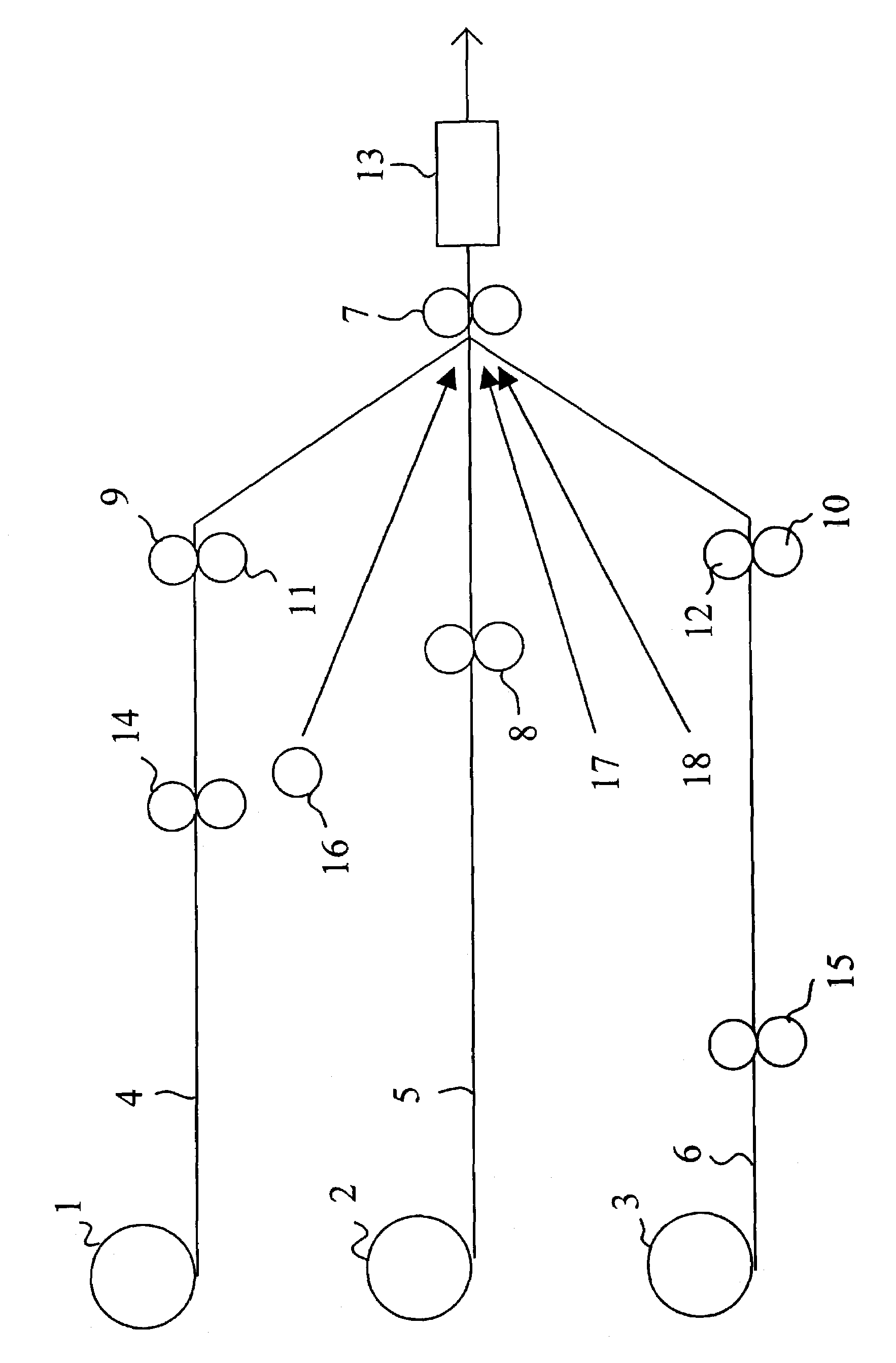Method of producing paperboard product with an even thickness
a technology of paperboard and thickness, applied in papermaking, non-fibrous pulp addition, transportation and packaging, etc., can solve the problems of reducing the material consumption of thick paperboard, reducing the use of premium-quality packages, and using more expensive raw materials. , to achieve the effect of good stiffness and good stiffness
- Summary
- Abstract
- Description
- Claims
- Application Information
AI Technical Summary
Benefits of technology
Problems solved by technology
Method used
Image
Examples
Embodiment Construction
[0019]The exemplary embodiment shown in the diagram is suited for the manufacture of a three-layer product. To make such a three-layer product, three webs 4, 5, 6 are needed that are taken to the manufacturing process as material rolls 1, 2, 3. As required by the process, the webs are paid off from the rolls 1, 2, 3 and passed into a bonding / calibration nip 7 formed between two opposed rolls. The webs are bonded to each other in this nip 7. Initially, the middle-layer web 5 is passed into the nip of embossing rolls 8 that works the web by pressing thereon a raised pattern through embossing of the web 5 in a dry state so as to deform the web surface in a permanent manner. In this context, a dry web must be understood as have the normal moisture content of a web being paid off from a storage or machine roll 2, that is, the delivery moisture content of the web roll, typically less than 10%, generally 3% to 12%. Furthermore, the embossing operation is performed without subjecting the we...
PUM
| Property | Measurement | Unit |
|---|---|---|
| Fraction | aaaaa | aaaaa |
| Thickness | aaaaa | aaaaa |
| Weight | aaaaa | aaaaa |
Abstract
Description
Claims
Application Information
 Login to View More
Login to View More - R&D
- Intellectual Property
- Life Sciences
- Materials
- Tech Scout
- Unparalleled Data Quality
- Higher Quality Content
- 60% Fewer Hallucinations
Browse by: Latest US Patents, China's latest patents, Technical Efficacy Thesaurus, Application Domain, Technology Topic, Popular Technical Reports.
© 2025 PatSnap. All rights reserved.Legal|Privacy policy|Modern Slavery Act Transparency Statement|Sitemap|About US| Contact US: help@patsnap.com


